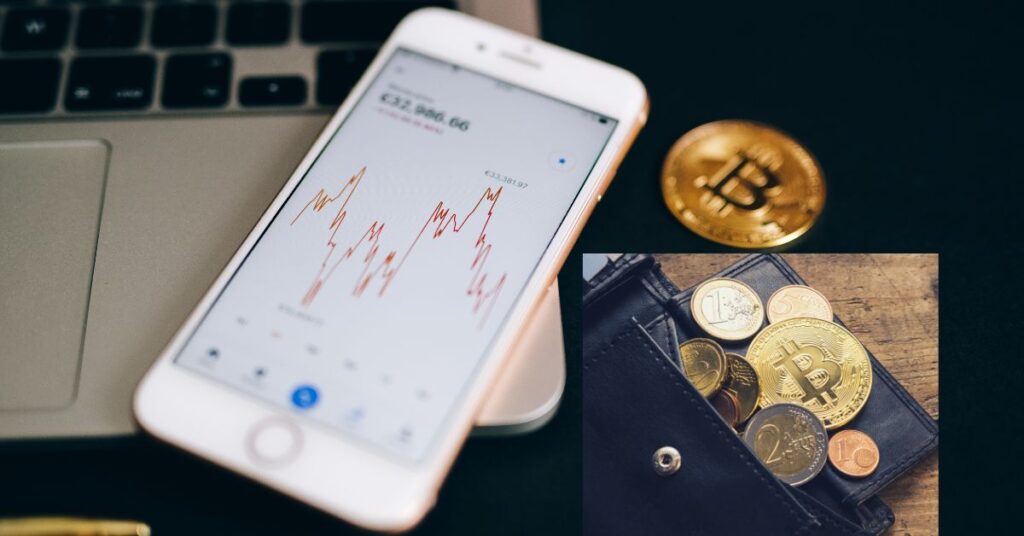How to Set Up a Crypto Wallet: Beginner’s Complete Step-by-Step Guide
Cryptocurrency is rapidly transforming how people view money, payments, and investments. Whether you want to invest in Bitcoin, trade Ethereum, or explore decentralized finance (DeFi), the first step is creating a crypto wallet. A crypto wallet is your gateway to storing, sending, and receiving digital assets safely.
This guide will walk you step by step through how to create a crypto wallet, the different types available, their benefits, risks, and practical tips for beginners. By the end, you will understand not only how to set up your wallet but also how to keep your funds secure.
What Is a Crypto Wallet?
A crypto wallet is a digital tool that allows you to store, send, and receive cryptocurrencies. Unlike a traditional wallet, it doesn’t hold physical money. Instead, it stores the private keys that give you access to your digital assets on the blockchain.
Think of it like this: the blockchain is the public ledger where all transactions are recorded, while your wallet is the key that unlocks your part of that ledger.
Key Components of a Wallet
-
Public Key: Like your account number. Used to receive funds.
-
Private Key: Like your PIN or password. Used to access and spend funds.
-
Seed Phrase: A series of words that can recover your wallet if it’s lost.
Types of Crypto Wallets
Before creating one, you need to know the different types of crypto wallets. Each comes with unique advantages and trade-offs between convenience and security.
| Wallet Type | Examples | Best For | Pros | Cons |
|---|---|---|---|---|
| Software Wallets | MetaMask, Trust Wallet, Exodus | Beginners, frequent traders | Easy setup, free, mobile/desktop access | Online risk, less secure than hardware |
| Hardware Wallets | Ledger Nano S/X, Trezor | Long-term investors, high-value holdings | Very secure, offline storage | Costs money, less convenient |
| Paper Wallets | Generated offline, printed QR | Cold storage, backup | Completely offline, immune to hacks | Easy to lose/damage, hard for daily use |
| Web Wallets | Coinbase, Binance Wallet | Quick access, beginners | Easy to use, exchange-linked | Exchange risk, not fully in your control |
| Custodial Wallets | Wallets managed by third party | Passive holders | No technical setup, easy password recovery | You don’t fully control your funds |
Step-by-Step Guide to Creating a Crypto Wallet
1. Decide the Type of Wallet You Need
Ask yourself:
-
Do you want security above all else? → Go for a hardware wallet.
-
Do you want convenience and low cost? → Choose a software wallet.
-
Are you just starting out? → A mobile app wallet like Trust Wallet is great.
2. Download or Buy Your Wallet
-
Software Wallets: Download apps like MetaMask (browser extension + mobile), Trust Wallet (iOS/Android), or Exodus (desktop + mobile).
-
Hardware Wallets: Buy devices like Ledger or Trezor from the official website (never from third parties to avoid tampering).
3. Install and Set Up
For software wallets:
-
Go to the official website/app store.
-
Download the application.
-
Follow installation steps.
For hardware wallets:
-
Connect the device to your computer or phone.
-
Install the manufacturer’s companion app.
4. Create a New Wallet
-
Open the app/device.
-
Select “Create New Wallet.”
-
The system generates your seed phrase (12 to 24 words).
Important: Write this down on paper. Do not store it on your phone or email. Anyone with this phrase can access your funds.
5. Set a Strong Password or PIN
-
Choose a password that combines letters, numbers, and symbols.
-
Don’t reuse passwords.
-
Store it securely in a password manager or written note (offline).
6. Backup and Verify Seed Phrase
-
Most wallets will ask you to re-enter your seed phrase to confirm you wrote it down correctly.
-
Store the paper backup in a safe, dry place. Some people use fireproof safes.
7. Add Cryptocurrency
Once your wallet is set up:
-
Buy crypto from an exchange (Coinbase, Binance, Kraken).
-
Transfer it to your wallet’s public address.
-
Test with a small amount first to avoid mistakes.
8. Secure Your Wallet
-
Enable two-factor authentication (2FA) where possible.
-
Keep your device updated.
-
Avoid clicking suspicious links or downloading unknown files.
Best Software Wallets for Beginners
| Wallet | Supported Coins | Ease of Use | Special Features |
|---|---|---|---|
| MetaMask | Ethereum, ERC-20, BSC | High | Works with DeFi, browser extension |
| Trust Wallet | 4.5M+ assets | Very easy | Built-in DEX, NFT storage |
| Exodus | 200+ coins | User-friendly | Desktop + mobile, portfolio tracking |
| Coinomi | 1,700+ assets | Medium | Multi-language support, advanced features |
Best Hardware Wallets for Maximum Security
| Hardware Wallet | Supported Assets | Price Range | Special Features |
|---|---|---|---|
| Ledger Nano S Plus | 5,500+ assets | ~$79 | Beginner-friendly, compact |
| Ledger Nano X | 5,500+ assets | ~$149 | Bluetooth, mobile-friendly |
| Trezor Model One | 1,800+ assets | ~$69 | Open-source, simple design |
| Trezor Model T | 1,800+ assets | ~$219 | Touchscreen, Shamir backup |
Pros and Cons of Different Wallets
Software Wallets
-
Pros: Free, easy to use, quick transactions.
-
Cons: Vulnerable to hacks if your phone/computer is compromised.

Hardware Wallets
-
Pros: Safest option, offline storage.
-
Cons: Costs money, slower for quick transactions.
Paper Wallets
-
Pros: Completely offline, no digital footprint.
-
Cons: Can be damaged, lost, or stolen easily.
Custodial Wallets
-
Pros: No need to manage private keys yourself.
-
Cons: Risk of exchange hacks or company collapse.
Common Mistakes Beginners Make
-
Not backing up the seed phrase – if you lose access, your funds are gone forever.
-
Using unofficial download sources – increases risk of malware.
-
Leaving funds on exchanges – exchanges can be hacked or freeze withdrawals.
-
Falling for phishing scams – never click suspicious links.
-
Using weak passwords – easy for hackers to guess.
Tips for Wallet Security
-
Use hardware wallets for large holdings.
-
Keep small amounts in software wallets for daily transactions.
-
Use multiple wallets (separate investment wallet and trading wallet).
-
Regularly update wallet apps and firmware.
-
Consider a multi-signature wallet for added protection.
Conclusion
Creating a crypto wallet is the first and most crucial step in your cryptocurrency journey. Whether you are a beginner buying your first Bitcoin or an investor securing large holdings, the right wallet ensures your funds are safe.
-
Software wallets are perfect for beginners and everyday use.
-
Hardware wallets offer maximum security for serious investors.
-
Always back up your seed phrase and keep it offline.
Frequently Asked Questions (FAQs)
What is the safest crypto wallet?
Hardware wallets like Ledger and Trezor are the safest because they store keys offline.
Can I have more than one crypto wallet?
Yes, you can and should use multiple wallets for different purposes.
Are crypto wallets free?
Software wallets are free. Hardware wallets require a one-time purchase.
What happens if I lose my wallet or phone?
You can recover your funds with your seed phrase on another device.
Can I store multiple coins in one wallet?
Yes, many wallets support multiple cryptocurrencies. Check compatibility before choosing.




